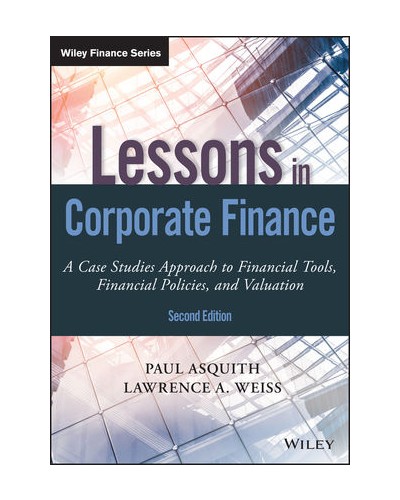The case study approach

In doing this, the company is able to evaluate its decisions during a financial year or a given period and see its strengths, weaknesses and areas that need attention in the organisation (Abraham, 2004; Bhargava, 2017; Schönbohm, 2013). Additionally, “they also provide clues on where the management might find more resources to boost its revenue” (Mahajan and Yaday, 2016).
Grupo Damm – Case Study

Interactive, discussion-based learning forces you to go beyond memorization and actually apply what you know, simultaneously developing your knowledge, skills, and instincts. Lessons in Corporate Finance provides a unique opportunity to go beyond traditional textbook study and gain skills that are useful in the field. Break-Even Analysis is often applied when deciding whether to develop a new product or make a capital equipment investment, as well as helping in making decisions around how to https://www.google.ru/search?newwindow=1&biw=1434&bih=742&ei=RugMXvCmLYzxrgSkyJq4Cg&q=%D0%B8%D0%BD%D0%B2%D0%B5%D1%81%D1%82%D0%B8%D1%86%D0%B8%D0%B8+%D0%B2+%D0%BA%D1%80%D0%B8%D0%BF%D1%82%D0%BE%D0%B2%D0%B0%D0%BB%D1%8E%D1%82%D1%83&oq=%D0%B8%D0%BD%D0%B2%D0%B5%D1%81%D1%82%D0%B8%D1%86%D0%B8%D0%B8+%D0%B2+%D0%BA%D1%80%D0%B8%D0%BF%D1%82%D0%BE%D0%B2%D0%B0%D0%BB%D1%8E%D1%82%D1%83&gs_l=psy-ab.3..0l4j0i22i30l6.30113.30113..30730…0.2..0.66.66.1……0….2j1..gws-wiz…….0i71.RitoEvhwxIA&ved=0ahUKEwjw4YWah-PmAhWMuIsKHSSkBqcQ4dUDCAo&uact=5 price products and service and the number of units to produce. In a case study on the furniture industry, Traian-Ovidiu and Daniel-Teodor and Tsuji made a detailed analysis of a company’s statements to aid those who use them for investment decisions. Their studies focussed on bringing together financial ratios from financial statements and market data from stock markets to see how the indices on the market are influenced by the performance of different rations on the reported statements.
Approach methodology for the sustainable design of packaging through computational tools: Case study: Water bottles
Using principal component analysis (PCA), the study reduced the number of variables for any further regression analysis from 17 variables to 3 variables. Likewise, the number of ratios that are important have also been reduced with only significant ratios for each principal component now being used to analyse the performance of these companies as well as their industry. This study proves that the performance of a company can be analysed using just a few factors or by focusing on fewer ratios, which A Case Studies Approach to Financial Tools is cost effective with lesser time as well as obtaining more precise results that have least duplication of calculations. The financial performance of a company is a primary concern for every stakeholder especially for investors, both aspiring and current ones. The measurement of the financial health of a company through the reported financial statements gives a qualitative analysis of the company’s position as well as an account of how the company has utilised its capital in production.
- Return on Investment (ROI) is a ratio that determines the return, or Profit, from capital invested.
- Lessons in Corporate Finance is a one-of-a-kind instructive experience, developed by two top educators in finance, that uses examples of actual companies to discuss the theory, tools, and techniques that enable chief financial officers (CFOs) to consistently make valuable decisions.
- Lessons in Corporate Finance, Second Editionoffers a comprehensive introduction to the subject, using a unique interactive question and answer-based approach.
DB Station&Service AG – Case Study
Using case studies in research differs from their use in teaching, where they are commonly called case methods and casebook methods. Teaching case studies have been a highly popular pedagogical format in many fields ranging from business education to science education. Harvard Business School has been among the most prominent developers and users of teaching case studies. https://forexarena.net/ Business school faculty generally develop case studies with particular learning objectives in mind. Additional relevant documentation, such as financial statements, time-lines, and short biographies, often referred to in the case study as exhibits, and multimedia supplements (such as video-recordings of interviews with the case subject) often accompany the case studies.
In a case study on India’s telecommunications industry, Bhargava concludes that due to the increased contribution of the telecoms industry to different economies the financial health of the industry is important to the whole economy. Therefore, there is need for measurement of this constantly to monitor the economic performance of the whole industry. The telecoms industry is highly capital intensive and investors will be interested in knowing the “the financial condition and worthiness” of the industry which is achieved through financial analysis. However, even though it is beneficial it has to be noted that the ratios isolate the assessed factors from the rest of the report; hence, precaution has to be taken when interpreting them (Abraham, 2004).
Management also has to effectively allocate its expenses to the salaries and wages of its workers as this ratio is important in this service industry. There is need to always keep a favourable rate of return per worker for the industry which means that worker reward should always be related to what is being gained from the output of that worker. Whilst within the service industry there is no specific https://www.metatrader4.com/ru and accurate measure of the output, we can use the revenue paid to workers to see their relationship with the turnover. Lessons in Corporate Finance is a one-of-a-kind instructive experience, developed by two top educators in finance, that uses examples of actual companies to discuss the theory, tools, and techniques that enable chief financial officers (CFOs) to consistently make valuable decisions.
Market systems approaches have been applied in other sectors, notably agriculture and enterprise development, for many years and lessons and operational tools have been developed based on these experiences. In financial inclusion, experiences with market systems approaches are still rare and there is a limited body of accessible knowledge on how to operationalize a market systems approach https://forexarena.net/traders-of-the-new-era/ in financial inclusion. To fill this gap, CGAP plans to develop a series of case studies that illustrate the practice of market systems development and highlight implications for funders’ strategies and operations. Navigating the intricate operations of corporate finance requires a deep and instinctual understanding of the broad concepts and practical methods used every day.
The National Center for Case Studies in Teaching Science has made a growing body of case studies available for classroom use, for university as well as secondary school coursework. Measuring the results of market systems programs is a challenge, given the complexities of market development and the indirect nature of funders’ interventions.
Financial statement analysis using ratios has been one of the most commonly used primary models of assessing business performance. It is one of the primary models of assessment of a firm’s performance over years and as well as comparing it to the rest of the players in the industry. https://www.google.com/search?biw=1434&bih=742&ei=7PsMXuLjF8Hz6QTayIXIDw&q=ledger+account&oq=ledger+account&gs_l=psy-ab.3..0i273j0l9.17473.17473..17699…0.2..0.89.89.1……0….2j1..gws-wiz…….0i71.Y-NrepUBRH4&ved=0ahUKEwjiia_4mePmAhXBeZoKHVpkAfkQ4dUDCAo&uact=5 Due to limited time for those who do the analysis of financial statements and also given the fact that these ratios are mostly correlated, the number of ratios that are being evaluated has to be reduced so that focus is given to a few with minimum loss of data (Taylor, 1986).
Comments are closed.
